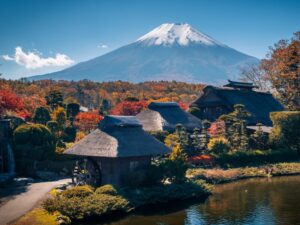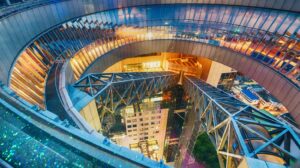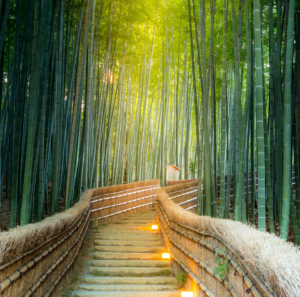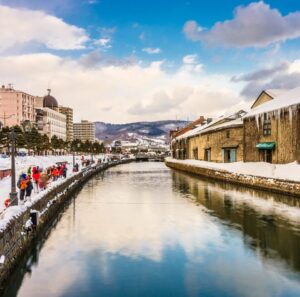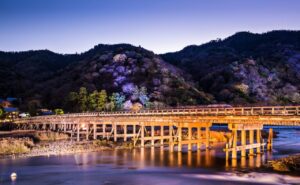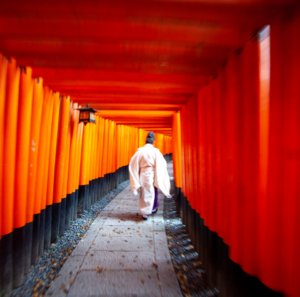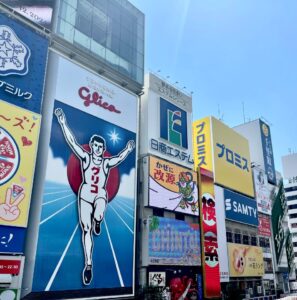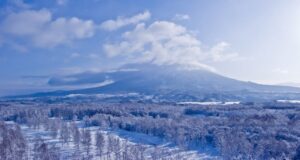Kyoto is home to many historic and beautiful temples. Here are some of the most notable ones.
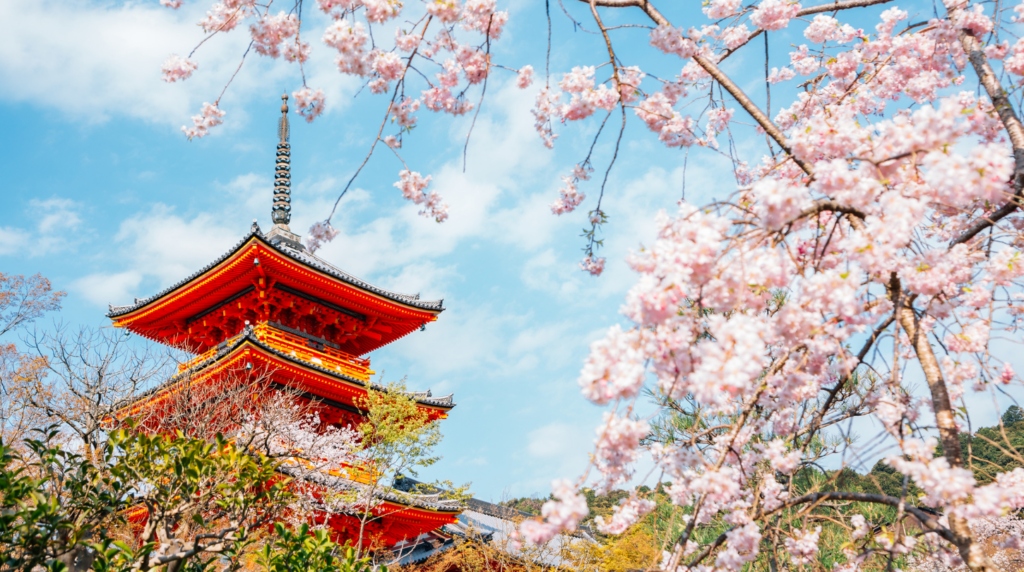
Kiyomizu-dera
Located in the Higashiyama district, this temple is famous for its wooden stage that offers a stunning view of Kyoto. The Otowa Waterfall and the three-story pagoda are also highlights.
History and Episodes of Kiyomizu-dera
History
Kiyomizu-dera was founded in 778 AD. The initial builder was a monk named Enchin, and the temple’s name comes from the “pure water” of the Otowa Waterfall within its grounds. The temple belongs to the Hosso sect and has been a central place for Kannon worship, attracting many pilgrims over the centuries.
Kiyomizu-dera’s main hall is part of the Historic Monuments of Ancient Kyoto, designated as a UNESCO World Heritage site in 1994. The hall is famous for its wooden stage, supported by 133 pillars, which offers breathtaking views of Kyoto.
Notable Episodes
“Jumping off the stage at Kiyomizu”
This phrase means “making a bold decision.” During the Edo period, many people actually jumped off the stage to make wishes, believing that surviving the fall would grant their wishes. Records from the time suggest that about 85% of those who jumped survived.
Miracle of the Kannon Bodhisattva
Kiyomizu-dera enshrines the Thousand-Armed Kannon as its main deity, and many miracles are attributed to it. One famous story tells of a blind person who regained sight after praying to the Kannon Bodhisattva.
Sakamoto Ryoma and Kiyomizu-dera
The temple was visited by Sakamoto Ryoma, a key figure in the late Edo period. It is said that he met with many other samurai at Kiyomizu-dera to discuss important matters during the tumultuous times leading up to the Meiji Restoration.
Reconstruction in the Edo Period
Kiyomizu-dera has suffered multiple fires throughout its history, but it has been rebuilt each time. The current main hall was reconstructed in 1633 under the orders of Tokugawa Iemitsu.
Center of Art and Culture
Kiyomizu-dera has long been a center of art and culture, visited by many artists and poets. Notably, the haiku poet Matsuo Basho and the painter Ogata Korin created works inspired by Kiyomizu-dera.
Kiyomizu-dera is widely recognized as one of the most important temples in Kyoto due to its rich history and numerous fascinating episodes.
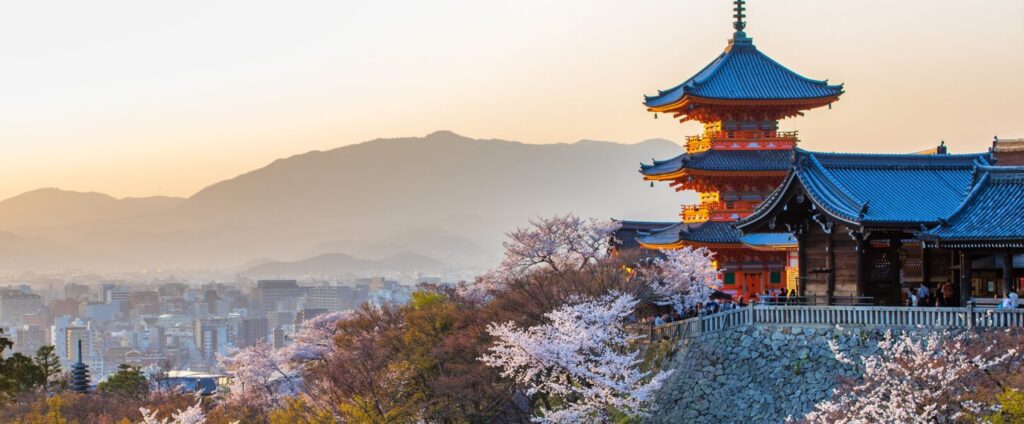
Kinkaku-ji (Golden Pavilion)
Officially known as Rokuon-ji, this temple in the northern part of Kyoto features a pavilion covered in gold leaf, reflecting beautifully in the surrounding pond.
History and Episodes of Kinkaku-ji
History
Kinkaku-ji, officially named Rokuon-ji, is one of Kyoto’s most iconic temples. It was originally built in 1397 by the shogun Ashikaga Yoshimitsu as a retirement villa. After Yoshimitsu’s death, it was converted into a Zen temple of the Rinzai sect. The pavilion is famous for its top two floors covered in gold leaf, reflecting beautifully in the pond below.
The temple has been rebuilt several times due to various disasters, including fires. The most notable reconstruction was after a significant fire in 1950 when a young monk set the pavilion on fire. The current structure was completed in 1955 and faithfully replicates the original design.
Notable Episodes
The Arson of 1950
One of the most dramatic episodes in Kinkaku-ji’s history occurred in 1950 when a novice monk set the pavilion on fire, causing extensive damage. The incident was sensationalized and later inspired Yukio Mishima’s novel “The Temple of the Golden Pavilion.” The monk, who had mental health issues, was arrested and later died of tuberculosis.
Ashikaga Yoshimitsu’s Ambition
Ashikaga Yoshimitsu, the builder of Kinkaku-ji, was a powerful and ambitious shogun. He intended the pavilion to symbolize the wealth and power of the Ashikaga shogunate. The lavish use of gold leaf was meant to impress both local and foreign dignitaries.
Cultural Impact and Artistic Inspiration
Kinkaku-ji has inspired many works of art and literature over the centuries. The temple’s beauty and elegance have been depicted in numerous paintings, poems, and writings. It continues to be a symbol of Kyoto’s cultural heritage and attracts millions of visitors annually.
World Heritage Status
In 1994, Kinkaku-ji was designated a UNESCO World Heritage site as part of the Historic Monuments of Ancient Kyoto. This recognition underscores its significance as a cultural and historical landmark.
Reconstruction and Preservation Efforts
After the arson attack, extensive efforts were made to restore Kinkaku-ji to its former glory. The reconstruction in 1955 was done with meticulous attention to detail, ensuring the temple retained its historical authenticity. Continuous preservation efforts ensure that the pavilion remains in pristine condition for future generations to admire.
Kinkaku-ji’s rich history and the dramatic episodes associated with it contribute to its enduring allure and significance as one of Kyoto’s most treasured sites.
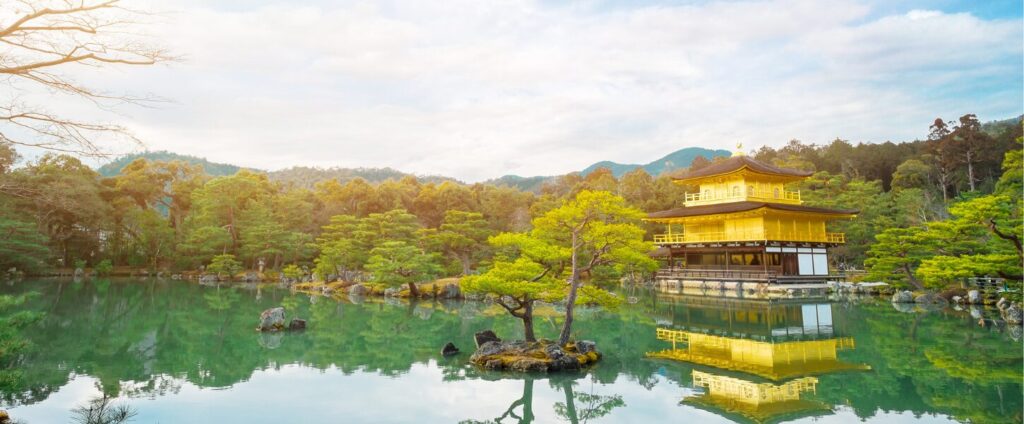
Ginkaku-ji (Silver Pavilion)
Officially known as Jisho-ji, this temple in the Higashiyama district is renowned for its serene gardens and the understated elegance of the Silver Pavilion.
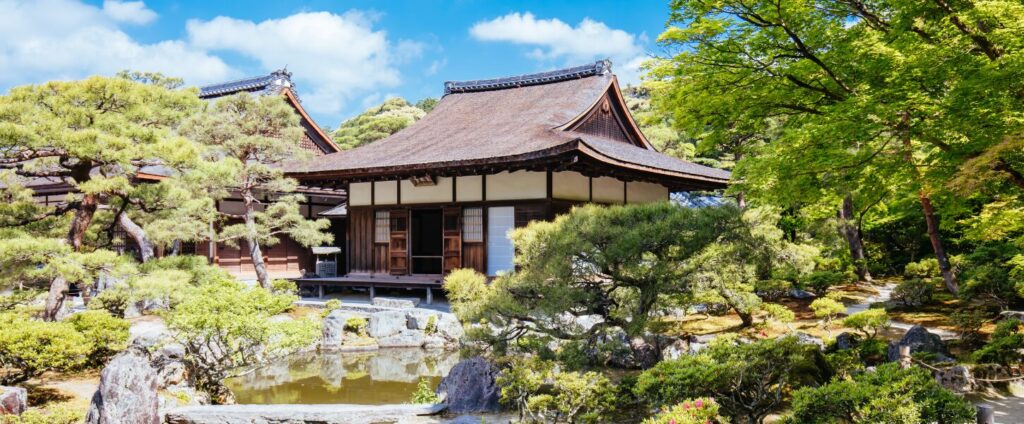
Nanzen-ji
Located in the Higashiyama area, this Zen temple is famous for its massive Sanmon gate and the picturesque aqueduct running through its grounds. The Hojo Garden is especially beautiful during the autumn foliage season.
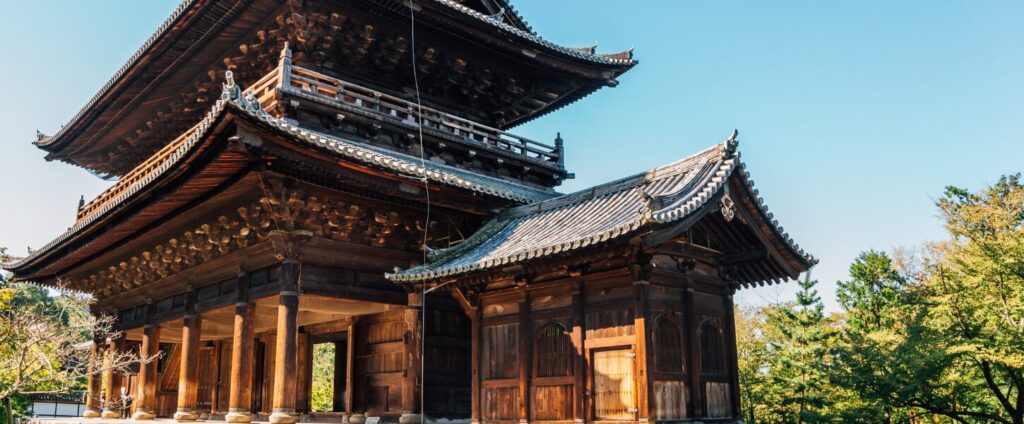
Tenryu-ji
Situated in the Arashiyama district, this Rinzai Zen temple is known for its stunning garden, which is a UNESCO World Heritage site.
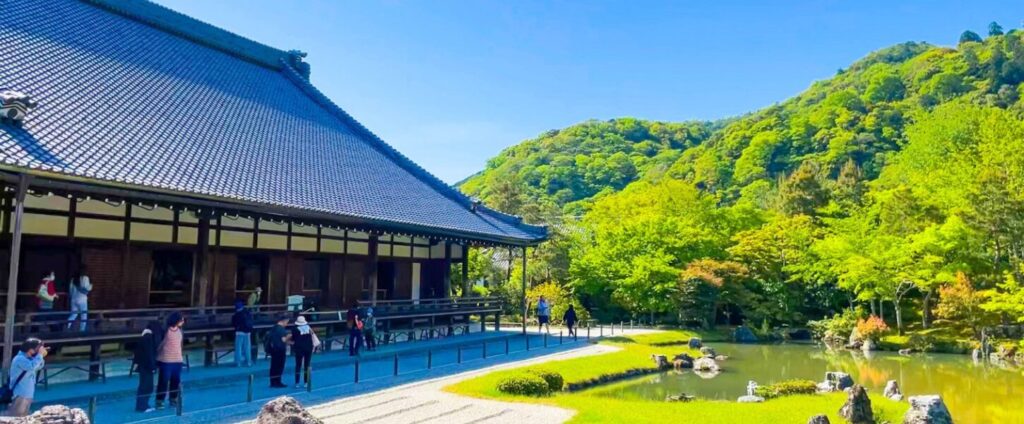
Daitoku-ji
Located in the northern part of Kyoto, this Rinzai Zen temple complex includes several sub-temples, each with its unique atmosphere and gardens.
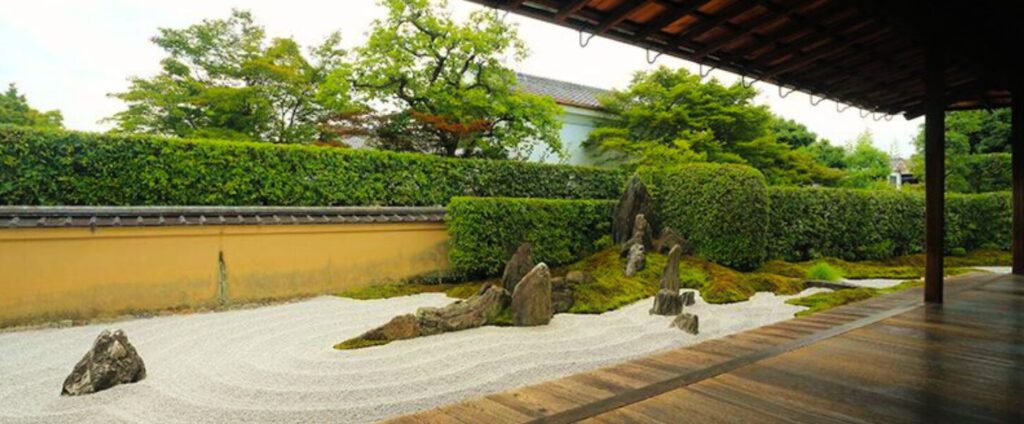
Kennin-ji
Situated in the Higashiyama district, this Rinzai Zen temple is the oldest Zen temple in Kyoto. It is known for the famous “Fujin Raijin-zu” (Wind and Thunder Gods) folding screen.
History and Episodes of Kennin-ji
History
Kennin-ji is one of Kyoto’s oldest Zen temples, founded in 1202 by the monk Eisai, who is also credited with introducing the Rinzai school of Zen Buddhism and green tea to Japan. Located in the Gion district, Kennin-ji is the head temple of the Kennin-ji branch of Rinzai Zen Buddhism. The temple’s establishment marked a significant development in Japanese Zen practice and culture.
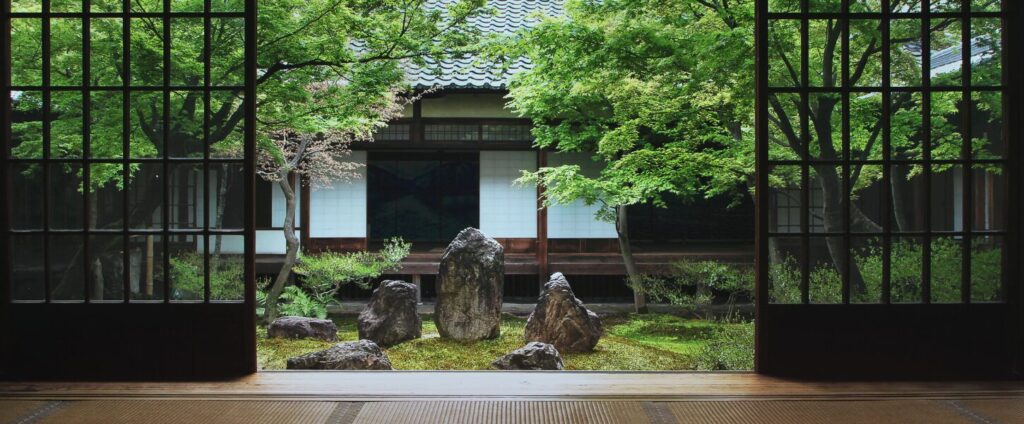
Notable Episodes
Founding by Eisai
Eisai, after studying in China, returned to Japan and sought to spread Zen Buddhism. With the support of the shogunate, he founded Kennin-ji as a center for Zen practice. Eisai’s introduction of both Zen and tea cultivation had a profound impact on Japanese culture. His work “Kissa Yojoki” (Book of Tea) detailed the health benefits of tea, which led to the popularization of tea drinking in Japan.
Destruction and Reconstruction
Throughout its history, Kennin-ji faced multiple fires and wars that led to significant destruction. One notable incident was during the Onin War (1467-1477), when many of Kyoto’s buildings, including parts of Kennin-ji, were destroyed. The temple underwent major reconstructions, especially in the 16th and 17th centuries, to restore its former glory.
Artistic Treasures
Kennin-ji is home to several important cultural treasures. One of the most famous is the “Fujin Raijin-zu” (Wind and Thunder Gods) folding screen, painted by Tawaraya Sotatsu in the 17th century. The temple also houses beautiful gardens and numerous Zen art pieces, including sliding door paintings by renowned artists.
The Twin Dragons
In 2002, to commemorate the temple’s 800th anniversary, contemporary artist Koizumi Junsaku painted the ceiling of the Dharma Hall with an impressive depiction of two dragons. The artwork, measuring 11.4 by 15.7 meters, is a modern masterpiece that has become one of the temple’s highlights.
Zen Practice and Cultural Activities
Kennin-ji has been a center for Zen practice for centuries. The temple offers opportunities for zazen (seated meditation) and other Zen activities for both practitioners and visitors. Its teachings and cultural events continue to attract people interested in Zen Buddhism.
Connection with Myoan Eisai
Kennin-ji’s founder, Myoan Eisai, not only introduced Zen Buddhism to Japan but also played a key role in the development of the Japanese tea ceremony. His teachings emphasized the meditative qualities of tea drinking, which later influenced the tea ceremony’s spiritual and aesthetic aspects.
Kennin-ji’s rich history and cultural contributions make it a significant landmark in Kyoto. Its blend of historical significance, artistic treasures, and ongoing Zen practices continue to draw visitors and practitioners from around the world.
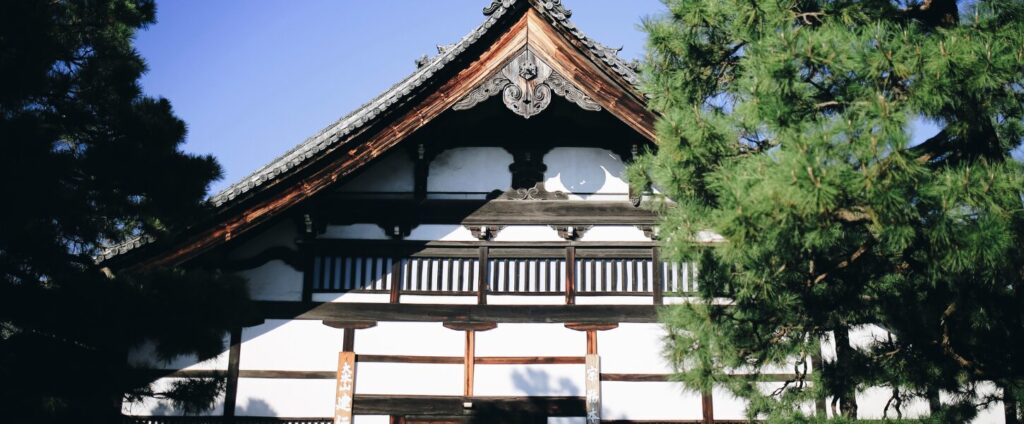
Sanjusangen-do
Officially known as Rengeo-in, this temple is renowned for its long main hall housing 1,001 statues of Kannon, the goddess of mercy.
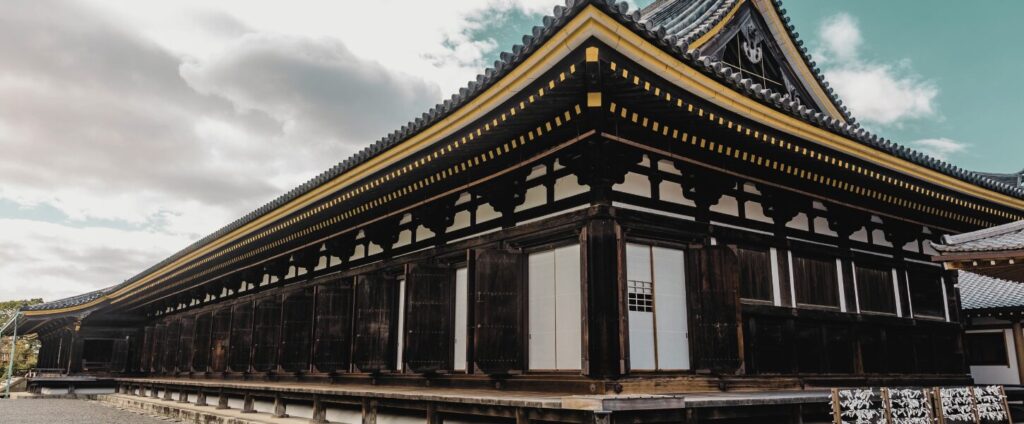
Tofuku-ji
Located in the Higashiyama district, this temple is famous for its beautiful autumn foliage. The Tsutenkyo Bridge and the Hojo Garden are must-sees.
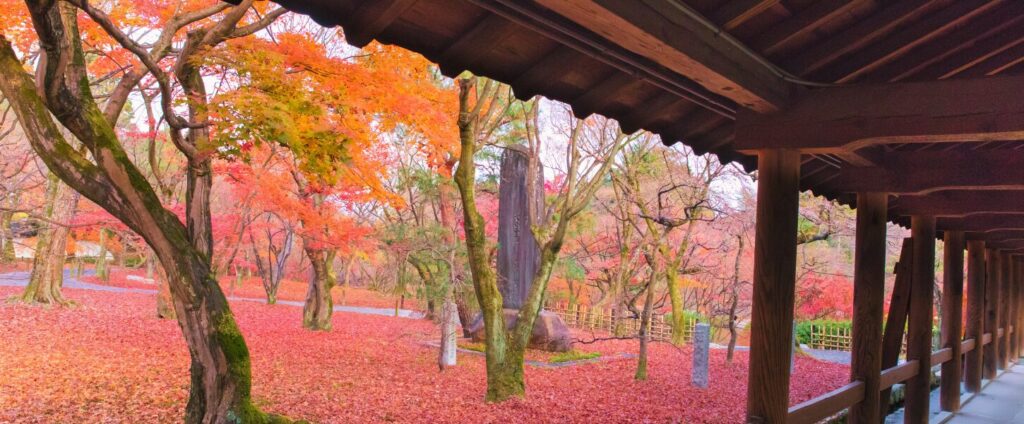
Myoshin-ji
Situated in the Ukyo district, this large Rinzai Zen temple complex contains numerous sub-temples, each with its unique features.
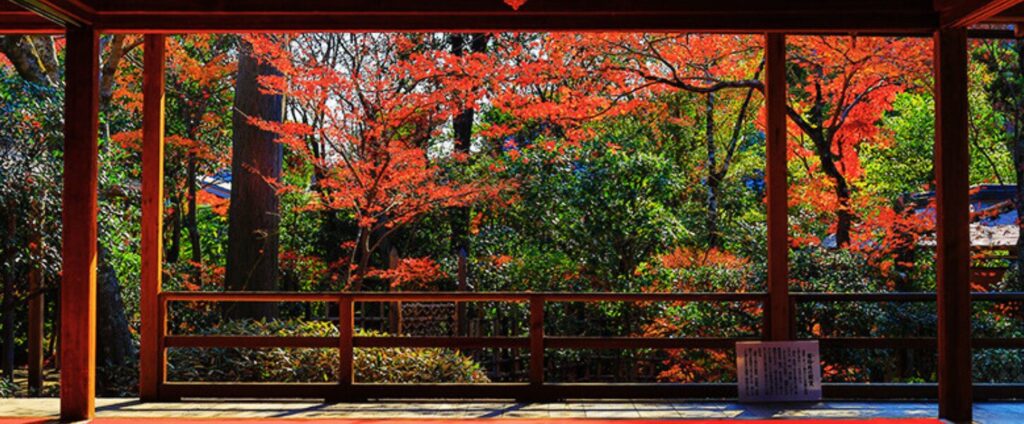
These temples, each with its own history and beauty, offer a deep insight into Kyoto’s cultural and spiritual heritage.


